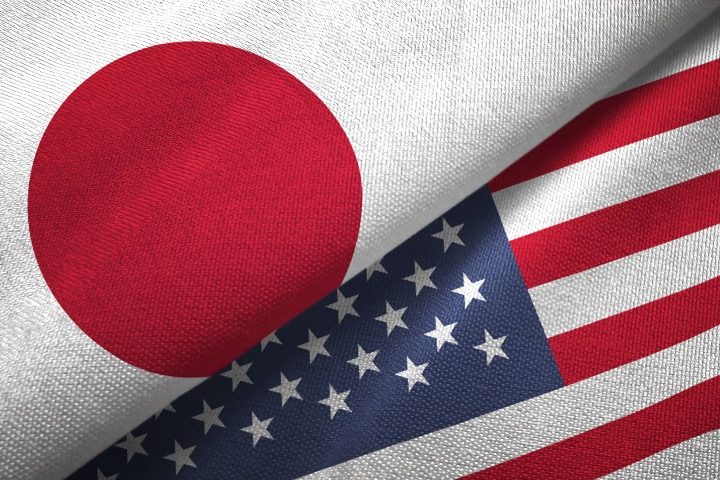
On April 9, the Yomiuri Shimbun reported that Japanese Prime Minister Fumio Kishida and U.S. President Joe Biden were scheduled to reiterate bilateral collaboration on developing a satellite network to detect and monitor hypersonic glide weapons during a Japan-U.S. summit the same day, as per various government sources.
Both countries hope to boost missile defenses to tackle North Korea and China, which are also developing the weapons.
Hypersonic gliders fly at low altitudes and speeds of at least Mach 5 and are very maneuverable, making it a challenge to detect them. To keep tabs on the gliders, the United States is developing a satellite constellation in which many small satellites are run as a single system.
Recent years have seen the U.S. earmarking resources to develop hypersonic glide vehicles, which are launched from a rocket before gliding to a target. Former Vice Chairman of the Joint Chiefs of Staff and former Commander of U.S. Strategic Command General John Hyten indicated that these weapons could enable “responsive, long-range, strike options against distant, defended, and/or time-critical threats [such as road-mobile missiles] when other forces are unavailable, denied access, or not preferred.” As per a report published in February this year, most U.S. hypersonic weapons, as opposed to those in Russia and China, are not created for use with a nuclear warhead. Hence, the same report stated, “American hypersonic weapons will likely require greater accuracy and will be more technically challenging to develop than nuclear-armed Chinese and Russian systems.”
A joint statement is to be published after the summit stating that the U.S. will work with Japan in establishing a satellite network in low-Earth orbit. Both countries are also to confirm cooperation for launch tests, information sharing and analysis. Moreover, Japan will work together with the United States on space surveillance in the wake of China and Russia developing “killer satellites” to target other countries’ satellites.
Also, on April 8, Reuters reported that Australia, the United Kingdom, and the United States (AUKUS) announced that they were exploring the idea of working with Japan in developing advanced military capabilities under the auspices of the AUKUS security framework, despite U.S. export-control restrictions that undermine existing partners’ efforts to tackle China’s power in the Indo-Pacific region.
Set up by the three countries in 2021, the alliance is part of the effort to counter China’s rising influence.
“Recognising Japan’s strengths and its close bilateral defense partnerships with all three countries, we are considering cooperation with Japan on AUKUS Pillar II advanced capability projects,” Britain, the United States, and Australia said in a joint statement published by the British government and quoted by Reuters.
Additionally, Britain posited that consultations on future collaboration among the existing AUKUS partners and other nations, including Japan, were poised to begin this year.
The AUKUS nations hope to work together with Japan in areas such as hypersonic weapons and artificial intelligence to address China’s military expansion in the Indo-Pacific, people acquainted with the situation disclosed. Japan is regarded as a natural candidate to join the alliance, since it is a key ally in Asia for all three AUKUS members, and Biden has been hoping to bolster partnerships with allies in Asia, including Japan and the Philippines.
The three AUKUS defense ministers were scheduled to reveal on April 8 that they will launch talks linked to Pillar II of the AUKUS pact, according to a report by the Financial Times (FT) on April 7, citing people familiar with the situation.
Pillar II commits the members to collaborate on military technologies including quantum computing, artificial intelligence, hypersonic weapons, and undersea capabilities. The report said they would not expand the first pillar, which focuses on Australia’s procurement of nuclear-powered submarines.
Based on the same FT report, Australia and Britain had for months been opposing the idea of inviting Japan to AUKUS, partly because they wanted to concentrate on addressing existing complications in their trilateral cooperation.
Financial Times cited Kurt Campbell, the U.S. deputy secretary of state and a champion for Japanese involvement in AUKUS, as saying the U.S. was separately doing development and co-production with both the U.K. and Australia, but that “how we trilateralize some of that over time is challenging.”
Campbell seemed to acknowledge that Tokyo had some work to do in terms of defending sensitive information, saying the U.S. had been urging it to take measures. “Japan has taken some of those steps, but not all of them,” he said at an AUKUS event at the Center for a New American Security, a think tank in Washington.
In an interview with FT on April 5, Kishida admitted that no formal decision had been made on how Japan would work with AUKUS in the future. “To achieve a free and open Indo-Pacific, we would like to continue various efforts to strengthen our cooperation with the US, Australia and the UK, who are important partners in security and defense,” he said.
Rahm Emanuel, the U.S. ambassador to Tokyo, penned in an opinion piece in The Wall Street Journal (WSJ) on April 3 that Japan was “about to become the first additional Pillar II partner.”
However, the South China Morning Post (SCMP) reported that Australia has tried to downplay talk that Japan may be formally invited to join AUKUS, maintaining that Tokyo’s involvement would be restricted to cooperation on developing advanced technologies. There are “no plans” to expand AUKUS beyond its three founding members, Prime Minister Anthony Albanese said at a press conference in Canberra on April 9, in comments quoted by SCMP.
“What is proposed is to look at ‘pillar two’ of AUKUS and look at a project-by-project, whether there would be engagement, and Japan is a natural candidate for that to occur,” Albanese said. “What is not proposed is to expand the membership of AUKUS.”
Australian Defense Minister Richard Marles reinforced that the AUKUS partners could potentially work with Japan on specific technology projects, but that it would not join the alliance.
Canberra is concerned that adding a fourth country to the alliance would complicate and take attention away from the already difficult task of acquiring nuclear-powered submarines, as per a diplomatic source cited by Reuters.
A Japanese government official also told Reuters that Australia and the U.K. would likely not be in favor of talks about Japan formally joining the alliance until they had tangible results from the pact.
In response, China slammed the AUKUS pact as dangerous, cautioning that it could ignite a regional arms race. Beijing added that it was “gravely concerned” about reports that Japan could soon join AUKUS amid an American push for its inclusion.
The move “disregards the risk of nuclear proliferation” and would “intensify the arms race in the Indo-Pacific region and disrupt regional peace and stability,” foreign ministry spokeswoman Mao Ning said at a daily press briefing.
Mao said Beijing “opposes the formation of exclusive ‘small circles’ and the creation of bloc confrontation.” “Japan, in particular, should deeply learn from historical lessons and exercise caution in military security,” she said.



